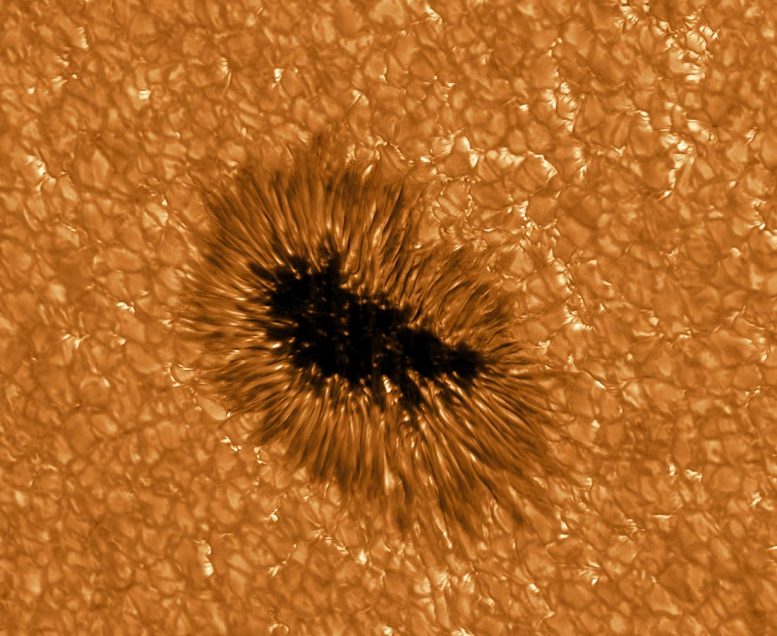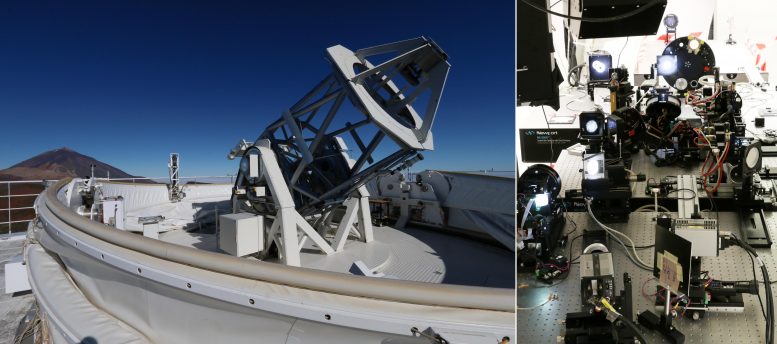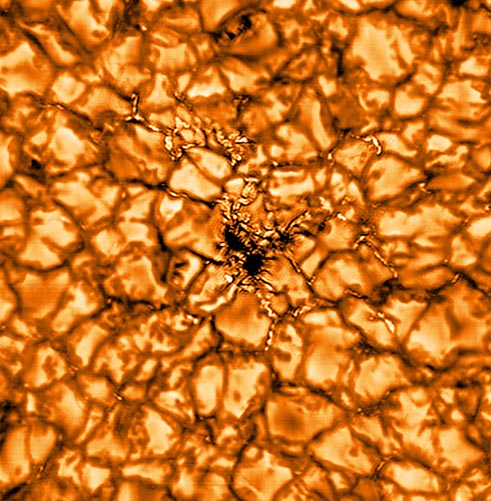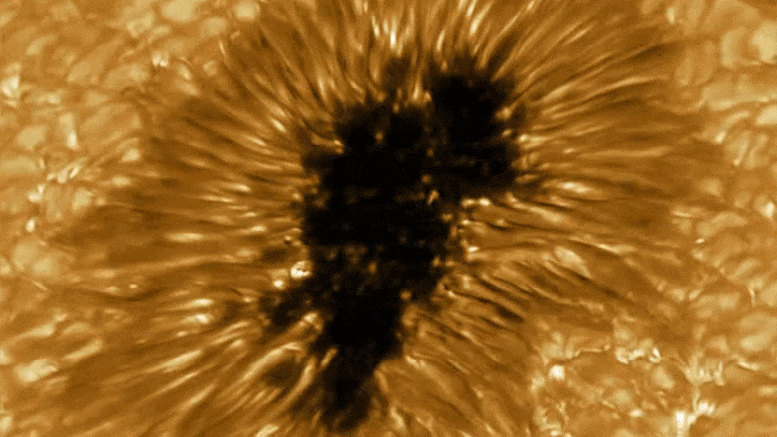
Posted on 09/10/2020 6:02:04 AM PDT by zeestephen
The GREGOR telescope allows scientists to resolve details as small as 50 km on the Sun [best photo in Comment #1].
(Excerpt) Read more at scitechdaily.com ...

The thing that gives us life looks creepy to me.


What is a sun spot? What’s going on? What are the elongated things at its edge? What’s in its dark centre?

That’s pretty hot.
The Lord works in mysterious ways.
The Eye of Sauron.
The dark area of the spot is significantly “cooler” than the surrounding bright surface area.
Very powerful magnetic forces in the dark area temporarily block the natural flow of interior heat to that part of the sun’s surface.
The first thing I think of when I look at that spot is malignant melanoma.
You rang?
I was thinking the other end of Buttigieg...
Thanks.
A sun spot is like a hole in the upper layers of the sun’s heliophere (like an atmosphere but composed mostly of hot plasmas instead of gas). It allows us to see beyond this outer layer and peer a little deeper into the heliosphere. So the dark spot is a deeper layer that we can’t normally see.
The “elongated things” are probably plasma filaments (think of the moving lines that radiate from a Van De Graaf generator, except multiplied by about a million times in number and intensity).
Another way to think of this is like a storm in the heliosphere, kind of like looking down into the eye of a tornado from above (or looking through Jupiter’s great red spot into a lower level of the atmosphere there). But that similarity is just superficial; sun spots are not caused by normal weather phenomenon, but by electromagnetic phenomenon.
All those convex things crowded together, making up the surface of the sun--are those plasma bubbles or nuclear explosions?
~S
Any nuclear reactions would be happening much deeper inside the Sun than we can see from looking at the surface. What we can see is the upper part of what is called the “convection zone”, because it’s a huge layer (200,000 km deep) where the heat is moving up by convection from the inner part of the sun to the outer surface.
So those patches on the surface are made of plasma, I don’t know that I would call them “bubbles”, though. I think they are just the top of a very long plasma filament that extends down through the convection zone. When you look at the edge of the sun spots, you can see these filaments packed together and extending down far below the surface, so I believe the whole surface is just composed of a patchwork of the “ends” of these tightly packed filaments.
Thank you very, very much. You’ve made it much more interesting.
Disclaimer: Opinions posted on Free Republic are those of the individual posters and do not necessarily represent the opinion of Free Republic or its management. All materials posted herein are protected by copyright law and the exemption for fair use of copyrighted works.